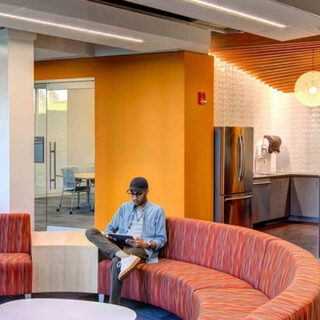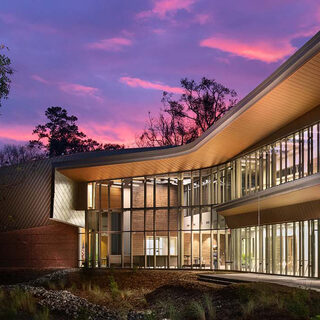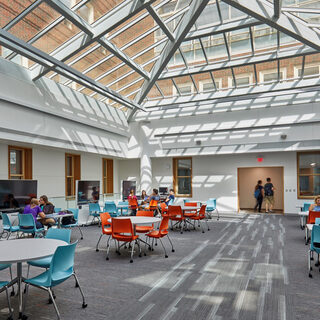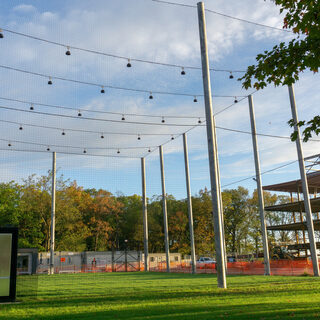Tradeline's industry reports are a must-read resource for those involved in facilities planning and management. Reports include management case studies, current and in-depth project profiles, and editorials on the latest facilities management issues.
Latest Reports
Academic Workplace Evolution: How Universities Are Rethinking Spaces for Faculty and Staff
Colleges and universities are rethinking their workplaces to align their space with how people work today and to use space to achieve their strategic goals. Beyond macro forces reshaping higher education in terms of access, accountability, and financial stability, there is a confluence of financial, environmental, technological, and cultural factors prompting this change, including increasing numbers of administrative staff and a growing disengagement among faculty and staff. But the most common mistake that institutions make when trying to change their workplace is assuming that they are trying to solve a space problem. Even if the impetus for a project is a space problem—you’re out of space and have no place to put the new faculty or staff member you just hired!—you won’t solve it by thinking about it that way. It’s more complex and nuanced than that. What you need first is a workplace strategy, a coherent statement that describes how your space will be used to help you achieve your larger strategic goals.
New Science Center at Mercer University Supports Robust STEM Research
Faced with inadequate facilities and insufficient space to accommodate increasing enrollment in its STEM programs, Mercer University in Georgia had to make a decision: Continue using classrooms built in a bygone era and miss valuable opportunities to attract top students and faculty, or construct a new facility that offers opportunities for consolidation, interaction, and collaboration. University leaders chose the latter with the establishment of the $44 million Spearman C. Godsey Science Center, which opened in January 2018.
Health Professions Academic Building
As a new paradigm for healthcare leadership training in the Coastal Georgia region, the Health Professions Academic Building at Waters College of Health Professions will serve Georgia Southern University’s mission to drive economic and regional workforce development needs. The new building houses state-of-the art simulation facilities, nursing skills and assessment labs, a large multi-purpose space, conference room, classrooms, open collaboration spaces, student study rooms, shared lounge space, and active learning/teaching labs that serve many of the university’s programs, including cardiovascular interventional sciences, radiologic sciences, nuclear medicine, medical laboratory science, respiratory therapy, and communication sciences and disorders.
Reviving Legacy Buildings for 21st Century Science
Miami University and The Pennsylvania State University have transformed outdated buildings into modern STEM teaching and research centers while maintaining some of each building’s historic aspects. The projects aim to replace siloed labs, dark corridors, and dated HVAC systems with collaborative research facilities and up-to-date mechanicals, recapturing wasted space to provide areas where students can gather. Swing space for affected occupants was crucial—Miami University’s Pearson Hall remained partially occupied during construction, while Penn State’s Steidle Building was vacated—as was clear and frequent communication with faculty and other building users. Both projects required fairly complex phasing.
University of Michigan/Ford Robotics Building Designed for Research and Recruitment
Roads filled with driverless cars, ethical decisions left up to smart machines, and robots that help paralyzed patients walk again sound like elements of a best-selling sci-fi thriller, but these are just a few of the research projects planned at the University of Michigan’s new Ford Motor Company Robotics Building. Scheduled to open in early 2020 at the school’s main campus in Ann Arbor, it is the university’s first public-private facility partnership. The collaboration offers insight into facility planning and industry partnership models that are emerging to support artificial intelligence (AI) and robotics innovation, recruit top talent, and prepare new graduates with the skills needed to thrive in this burgeoning industry.





